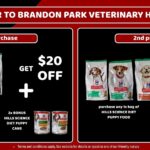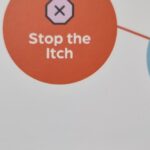REHABILITATION / POST-OP MANAGEMENT
The Recovery period is as important as the surgery. We include a 4-week Rehab program tailored to each individual’s rate of recovery. This will involve 4 weekly day visits in to the hospital.
During these sessions a combination of techniques are used to improve healing and comfort levels
1. Laser Therapy – a pain free drug free alternative.
a. Promotes faster healing
b. Reduced inflammation
c. Reduces pain
2. Massage
3. Movement and mobilization exercises
After each session we will run through ’s progress and suggest a few exercises to do at home as well.
Patients generally enjoy their rehabilitation stays and feel more comfortable and mobile afterwards.
HERE ARE A FEW THINGS YOU CAN TRY AT HOME
Massage
The benefits of massage have been well known to man and more recently also applied to our pets. Massage helps improve circulation and lymphatic drainage which in turn promotes healing and speeds up the recovery phase. It also helps relieve built up muscle tension which reduces pain, increases flexibility and reduces scarring.
Massage for flexibility/reduce muscle tension
– Start by gently stroking the thigh over the front thigh muscles (quadriceps) and back thigh muscles (hamstrings)
• After 2-3 minutes begin massage of the muscles. Initially you can use two fingers or the thumb using gentle pressure perform massage in small smooth circular motions moving slowing up and down the thigh.
• Continue for 5 minutes.
Massage to reduce scar tissue
This type of massage improves the movement of all the tissue planes and reduces scarring and fibrous tissue. This can be done by using your fingers to move the skin around and over the wound site in side-to-side motions. Circular motions can also be used. The movement of this skin should be gentle and smooth and not too firm.
Passive Range of Motion ( ROM) Exercises
When? Passive range of motion exercises are best done after massage
Why? Exercises are designed to gently move the knee joint through its range of motion. A simple method can be demonstrated if you would like to give this a go at home.
Normal movement of the knee is very important to circulate joint fluid which promotes healthy cartilage and minimizes inflammation and pain. Early return to function also improves healing and reduces pain.
Lead walks
Short, controlled lead walk can begin the week after surgery. Start with 5 minutes at a time several times per day.
The slower the walk, the better. Too fast and dogs tend to hold the leg up and use the other three.
No Off-Lead activity until instructed
Ice Packs
A cool/ice pack can be used after these exercises.
Ice packs when used in the first few days after surgery can help reduce post-operative swelling and discomfort.
Wrap the ice in a tea towel before applying to skin. Do not apply directly onto skin as this can lead to cold burns. Leave on for about 5-10 minutes.
Some patients do not like this very much and may put up a fuss. If this is too uncomfortable cannot be managed do not worry.
EXERCISE PROGRAM
PHASE 1
These steps are to be performed in the first 1-2 weeks whilst patients are toe touching on the operated leg. Progression will be made to next level once adequate weight bearing begins. The first few weeks are most important; too much activity can lead to wound breakdown, further joint damage and lameness.
Remember these exercises are a guide and may need to be adjusted depending on your pet’s progress. Should you feel that any of these exercises causes pain or discomfort then please contact the clinic.
Day 1-2
1. Strict confinement to a room or pen
2. Massage 1-2 times daily
3. Ice pack 5min once or twice daily (where possible)
4. Short lead walks 3-4 times daily to toilet
5. Keep confined at all other times
Day 3 – 14
1. Strict Confinement and supervision
2. Massage (if possible)
3. Short lead walks to toilet (5min) several times daily (maintain a slow pace to ensure leg use)
PHASE 2:
Once consistent weight bearing has been achieved then further progression can be made into further improving mobility and strengthening.
Week 3 – 6
1. Increase lead walking for 15min 2-3 times daily where possible. The slower the better.
2. Supervised movements around the house – make sure no running or jumping.
3. NO OFF-LEAD activity and free run of the yard is not recommended as most pets are likely to over do it and result in increased pain or delayed healing.
6. Strengthening exercises can commence
• Sit-to-stand and Figure 8 walking can be gradually introduced into daily walking.
• Walking on grass and also up hills on the walk can be helpful
PHASE 3: Week 6 – 12
1. Lead walks can be increased to 20 – 30min once or twice daily.
2. Continue strengthening exercises as above
3. OFF-LEAD activity will be advised depending on healing.
By now patients should be moving quite very well with good leg usage. Most should have minimal or no lameness evident. Should at any time develop increased lameness or discomfort please contact the clinic.
PHASE 4: Weeks 12-16
1. Short period of supervised off lead activity can commence, but stopped if there is any increased soreness or stiffness.
Excessive activity or strenuous games such as ball chasing should not be allowed.
2. Lead walks can be increased 30 – 60min daily
For older dogs two shorter (20-30) lead walks would be more appropriate than one long walk.
3. Continue strengthening exercises as previous weeks if needed.
Weeks 16 onwards
Depending on healing and strengthening we should be getting closer to relatively normal activity levels. It is possible for pets to over dot it and so close supervision is still recommended. It is sometimes better to ease back into normal play and running as the more strengthening that occurs the less risk of further damage.
It is understandable with work and family commitments this is not always practical or possible to perform exercises as often as recommended.
It is important that in this initial phase not be overworked and experience increased pain after these sessions.
If you feel that this is the case please stop all exercises and contact the clinic.





